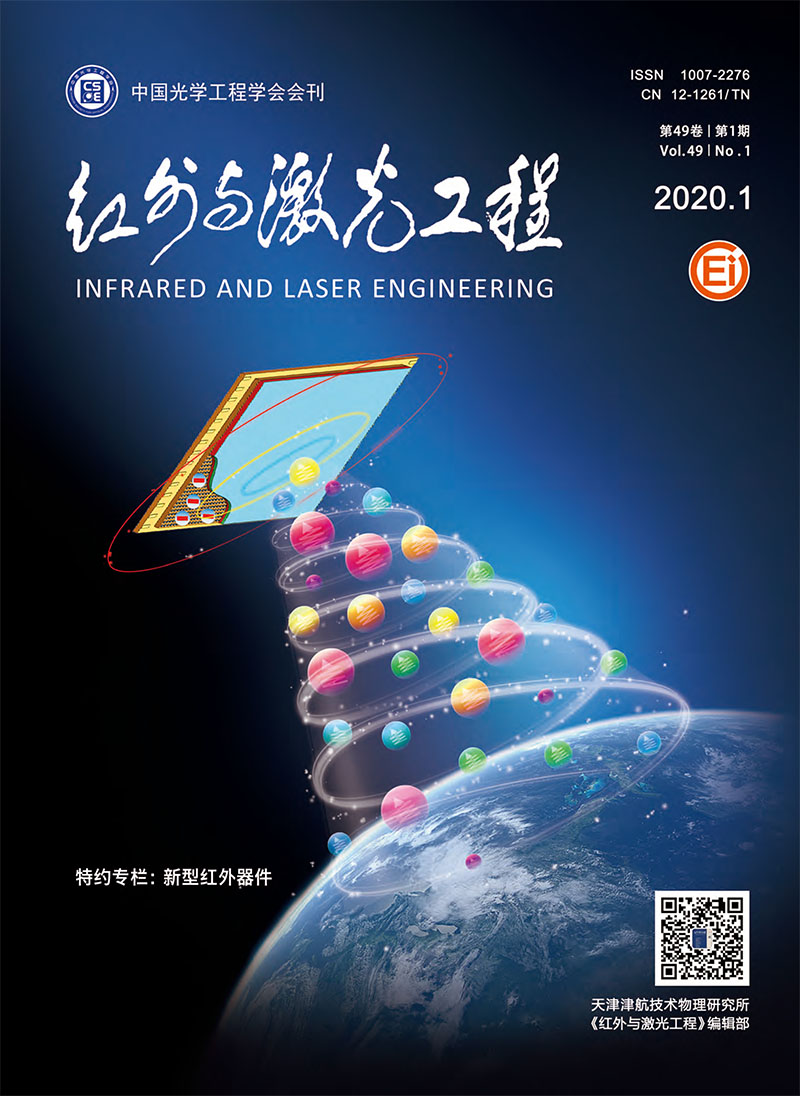Bao Xingdong, Yu Xilong, Mao Hongxia, Wang Zhenhua, Dong Yanbing. Research on fluid field and infrared radiation of vacuum plume based on theoretical analytical method[J]. Infrared and Laser Engineering, 2020, 49(1): 0104003-0104003(8). doi: 10.3788/IRLA202049.0104003
| Citation:
|
Bao Xingdong, Yu Xilong, Mao Hongxia, Wang Zhenhua, Dong Yanbing. Research on fluid field and infrared radiation of vacuum plume based on theoretical analytical method[J]. Infrared and Laser Engineering, 2020, 49(1): 0104003-0104003(8). doi: 10.3788/IRLA202049.0104003
|
Research on fluid field and infrared radiation of vacuum plume based on theoretical analytical method
-
1. State Key Laboratory of High Temperature Gas Dynamics, Institute of Mechanics, Chinese Academy of Sciences, Beijing 100190, China;
-
2. School of Engineering Science, University of Chinese Academy of Sciences, Beijing 100049, China;
-
3. Science and Technology on Optical Radiation Laboratory, Beijing 100854, China
- Received Date: 2019-10-11
- Rev Recd Date:
2019-11-21
- Publish Date:
2020-01-28
-
Abstract
When the rocket engine is working in high vacuum environment, the gas jet expands rapidly under the condition of extremely low back pressure, forming the vacuum plume. This vacuum plume can produce impact and erosion on space targets, and its infrared radiation characteristics can be widely used for the detection and recognition of the space targets. Based on the theoretical model of collisionless free molecular flow, the rapid analytical calculation of vacuum plume was carried out in this paper. The expansion and diffusion characteristics of the plume were obtained, which accorded with the known flow rule. On the basis of the calculated plume flow parameters, the Voigt line function was used to describe the dilating of the rarefied gas, and the radiation characteristics were calculated by line-by-line and LOS method. The results show that the boundary and diffusion distribution of vacuum plume are determined by the speed ratio of the nozzle exit. The stronger exit speed ratio is, the greater the area of the plume diffusions, and the higher the normalized density and temperature on the axis are. When the temperature of the nozzle exit is same, the radiation intensity of the plume increases with the increase of exit speed ratio. However, when the speed of the nozzle is same, the radiation intensity of the plume decreases with the increase of exit speed ratio. In the case of the same exit speed ratio, the radiation intensity is positively correlated with the thrust.
-
References
|
[1]
|
Simmons F S. Rocket Exhaust Plume Phenomenology[M]. California:The Aerospace Press, 2000. |
|
[2]
|
)刘晓磊,董小萌, 王通, 等. 天基红外系统对滑翔式高超声速目标探测性能分析[J]. 激光与红外, 2018, 48(8):999-1004.
Liu Xiaolei, Dong Xiaomeng, Wang Tong, et al. Analysis of SBIRS performance for the detection of HTV-2[J]. Laser & Infrared, 2018, 48(8):999-1004. (in Chinese |
|
[3]
|
Simons G A. Effects of nozzle boundary layers on rocket exhaust plumes[J]. AIAA Journal, 1972, 10(11):1534-1535. |
|
[4]
|
Bird G A. Molecular Gas Dynamics and the Direct Simulation of Gas Flows[M]. New York:Oxford University Press, 1994. |
|
[5]
|
Gimelshein S F, Boyd I D, Ivanov M S. Modeling of internal energy transfer in plume flows of polyatomic[C]//Conference:37th Aerospace Sciences Meeting and Exhibit, 1999. |
|
[6]
|
George J D. A combined CFD-DSMC method for numerical simulation of nozzle plume flows[D]. New York:Cornell University, 2000. |
|
[7]
|
Cai Chunpei, Boyd I D. Theoretical and numerical study of several free molecular flow problems[C]//Thermophysics and Heat Transfer Conference, 2006. |
|
[8]
|
Fan Jin, Shen Qin. A new method used in DSMC technique- the random sampling frequency method[C]//CFD Theory, Method and its Application, 1992. |
|
[9]
|
Zhang Jianhua, Cai Guobiao. Computation based on the Simons model for vacuum plume[J]. Journal of Propulsion Technology, 2002, 23(5):406-409. |
|
[10]
|
Cheng Xiaoli, Mao Mingfang, Yan Xiqin, et al. Numerical investigations of a small thruster plume at high altitude[J]. Chinese Journal of Space Science, 2002, 22(3):261-267. (in Chinese) |
|
[11]
|
Li Zhonghua, Li Zhihui, Peng Aoping, et al. A numerical method for simulating rarefied two phase flow[J]. Acta Aerodynamic Sinica, 2015, 33(2):266-271. (in Chinese) |
|
[12]
|
Li Zhihui, Li Zhonghua. Coupled navier-stokes/direct simulation monte carlo simulation of multicomponent mixture plume flows[J]. Journal of Propulsion and Power, 2014, 30(3):672-689. |
|
[13]
|
Cai Chunpei, Wang Limei. Numerical validations for a set of collisionless rocket plume solutions[J]. Journal of Spacecraft and Rockets, 2012, 49(1):59-68. |
|
[14]
|
Modest M F. Radiative Heat Transfer[M]. 2nd ed. New York:Academic Press, 2003. |
|
[15]
|
Arnold J O, Whiting E E, Lyle G C. Line by line calculation of spectra from diatomic molecules and atoms assuming a voigt line profile[J]. Journal of Quantitative Spectroscopy & Radiative Transfer, 1969, 73(69):775-798. |
-
-
Proportional views

-









 DownLoad:
DownLoad: